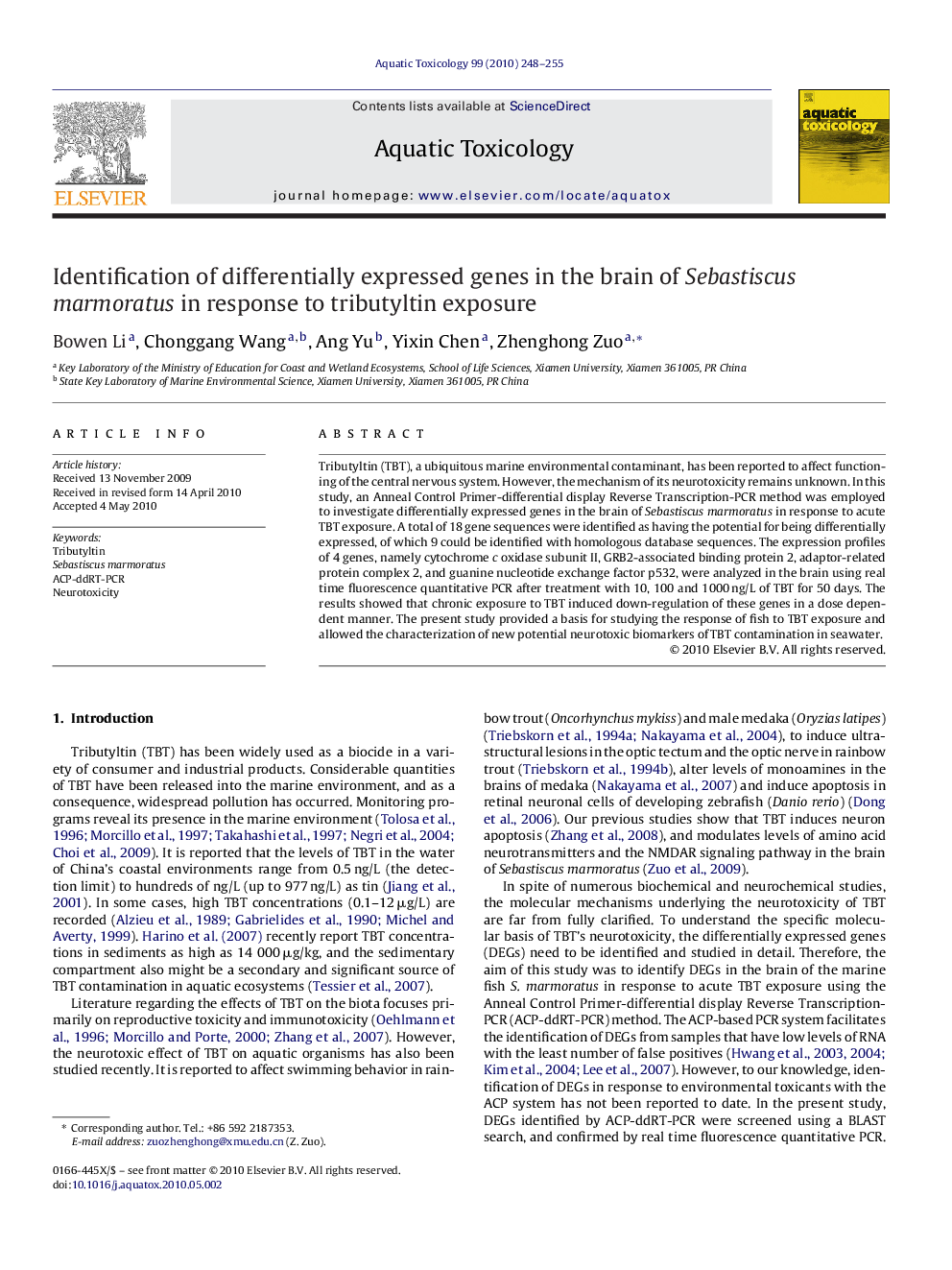| Article ID | Journal | Published Year | Pages | File Type |
|---|---|---|---|---|
| 4530357 | Aquatic Toxicology | 2010 | 8 Pages |
Abstract
Tributyltin (TBT), a ubiquitous marine environmental contaminant, has been reported to affect functioning of the central nervous system. However, the mechanism of its neurotoxicity remains unknown. In this study, an Anneal Control Primer-differential display Reverse Transcription-PCR method was employed to investigate differentially expressed genes in the brain of Sebastiscus marmoratus in response to acute TBT exposure. A total of 18 gene sequences were identified as having the potential for being differentially expressed, of which 9 could be identified with homologous database sequences. The expression profiles of 4 genes, namely cytochrome c oxidase subunit II, GRB2-associated binding protein 2, adaptor-related protein complex 2, and guanine nucleotide exchange factor p532, were analyzed in the brain using real time fluorescence quantitative PCR after treatment with 10, 100 and 1000Â ng/L of TBT for 50 days. The results showed that chronic exposure to TBT induced down-regulation of these genes in a dose dependent manner. The present study provided a basis for studying the response of fish to TBT exposure and allowed the characterization of new potential neurotoxic biomarkers of TBT contamination in seawater.
Related Topics
Life Sciences
Agricultural and Biological Sciences
Aquatic Science
Authors
Bowen Li, Chonggang Wang, Ang Yu, Yixin Chen, Zhenghong Zuo,
